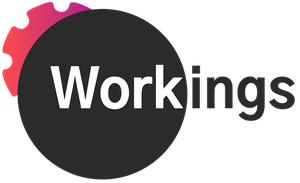CLASSIFICATION Q&A
“Why, working with Steyer, do I have to be a W-2? I’ve worked as a 1099 for years!”
The short answer is because the IRS says so. As many of you know, misclassification of employees is a very hot issue these days—and it will only get hotter as the gig economy expands.
The government, at both the federal and state levels, takes a keen interest in how companies classify workers, partly as a protective measure, to ensure that employees are getting access to healthcare and other benefits, and partly as a revenue-driving measure: employers pay various taxes associated with each employee, and the IRS does not want to miss out on those funds. Audits are common, and they have teeth: misclassification typically requires the payment of back taxes plus significant penalties.
“You mean I don’t get to choose my status? I don’t get to decide if I want to be a W-2 or a 1099?”
Correct. At various times, or at various companies, it has probably felt like you could choose—that it really was up to you. But companies operating in this way are prone to misclassification and, as such, they were/are most likely exposing themselves to considerable regulatory risk. Here at Steyer, we take business risks all the time: day in and day out, we bet on new markets, models, clients, projects, and talent. But regulatory risk is different; we have no appetite for rule breaking, so we work very hard to color inside the lines at all times.
“But wait a second: I work for Steyer, and I *am* a 1099!”
True! Some of you are in fact classified as 1099s. This is most likely because you are working on a very short project, which we define as lasting for fewer than six weeks. In some cases, you might have worked on multiple projects with us—but because we engage with you anew each time in connection with a specific deliverable, a 1099 classification is, according to our employment lawyer, appropriate.
“Enough about you. What’s better for me?”
That’s genuinely hard to say. Each model has its pros and cons, and especially because we are not allowed to dish out half-baked tax advice, you’d really have to consider your personal preferences and do all the math with a certified tax advisor to decide how you want to work as you continue to build your career.
What we can share, in an attempt to at least shed some light on all the moving parts, is some basic information:
As a 1099, you are responsible for all your taxes. You are also responsible for your own benefits and equipment. The upside: you get to deduct business expenses from your final tax bill.
As a W-2, Steyer manages your federal and state withholdings and contributes on your behalf to Social Security, Medicare, unemployment insurance, workers’ compensation, and state-based leave programs. We also provide PTO (paid time off), equipment, and, for those working at least 30 hours per week, healthcare benefits.
***
(Workings readers: feel free to email me at kwalton@steyer.net if you’d like a one-pager detailing our 2022 benefits package; we’re proud of it and happy to share it. We also believe that talent should have easier access to more data points on this front.)
Photo by Chris Abney on Unsplash


 Hello from Steyer!
Hello from Steyer!